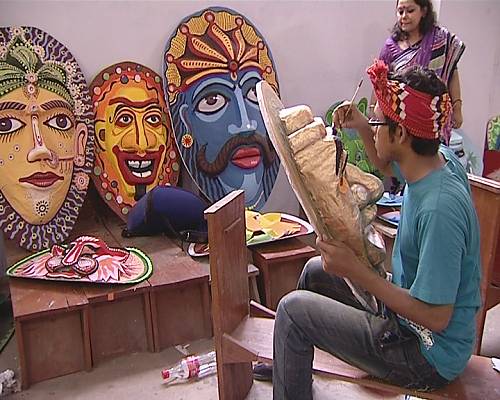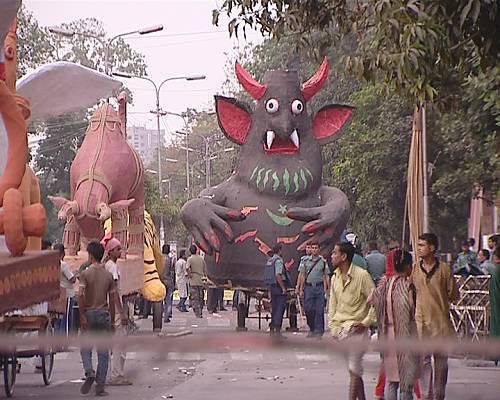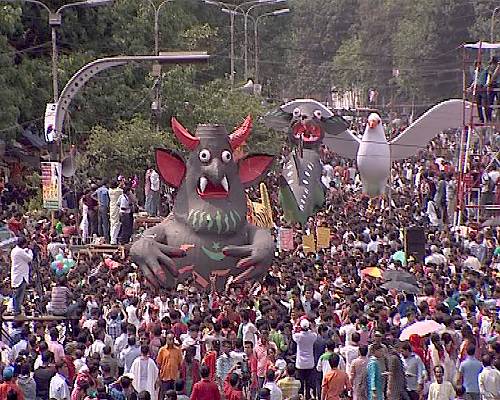Mangal Shobhajatra on Pahela Baishakh
Inscribed in 2016 (11.COM) on the Representative List of the Intangible Cultural Heritage of Humanity
Mangal Shobhajatra is a festival organized by students and teachers of Dhaka University’s Faculty of Fine Art in Bangladesh open to the public to celebrate Pahela Baishakh (New Year’s Day). Taking place on April 14, the tradition of Mangal Shobhajatra began in 1989 when students, frustrated with having to live under military rule, wanted to bring people in the community hope for a better future. Members of the university faculty work together a month before the festival to create masks (said to drive away evil forces and allow for progress) and floats. Among works made for the festival at least one will represent evil, another courage and strength and a third, peace. Items to sell on the day are also produced as a source of funding, such as paintings on Bangladesh folk heritage. The Mangal Shobhajatra festival symbolizes the pride the people of Bangladesh have in their folk heritage, as well as their strength and courage to fight against sinister forces, and their vindication of truth and justice. It also represents solidarity and a shared value for democracy, uniting people irrespective of caste, creed, religion, gender or age. Knowledge and skills are transmitted by students and teachers within the community.










